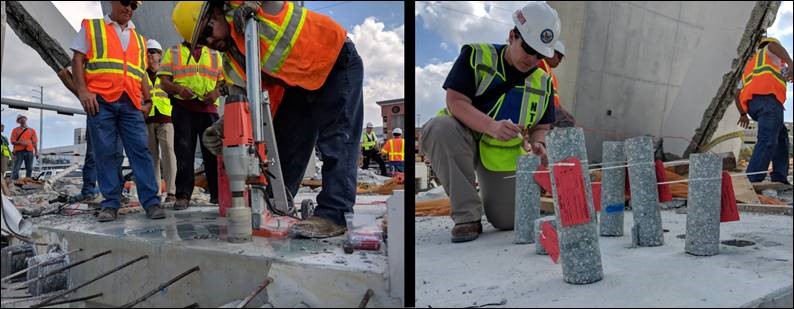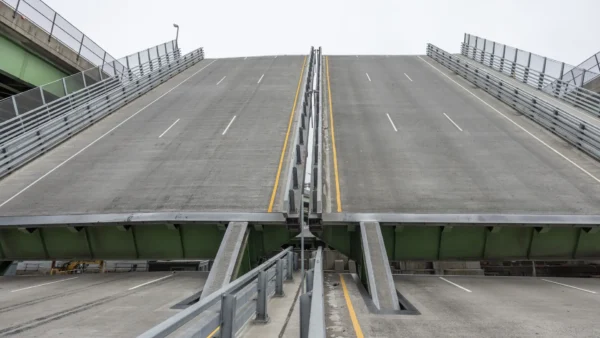Workers were adjusting two tensioning rods on the north end of the pedestrian bridge in Miami when it collapsed, killing six, a national agency has confirmed.
The finding by the National Transportation Safety Board (NTSB) now focusses attention on the north end of the 174-foot, 950-ton span, which crashed down onto the busy eight-lane thoroughfare below at Florida International University on 15 March.
Rebuilding the $14.2m bridge is off the cards, the NTSB added in its announcement on 21 March, saying: “The nature of the structure and the way it failed make reconstruction impractical.”
The university and the city are in mourning after the bridge, hailed as a feat of modern methods of construction promoted by the university’s own engineering department, became an instrument of death just five days after the prefabricated concrete span was hoisted into place over the road.
Attention has focussed on cracks discovered two days earlier on the span’s north end, but the tensioning activity, conducted without closing the road, will now occupy NTSB investigators as well.

NTSB investigators and contractors remove and catalogue core samples from the pedestrian bridge deck (NTSB)
“The investigative team has confirmed that workers were adjusting tension on the two tensioning rods located in the diagonal member at the north end of the span when the bridge collapsed,” the board said in a statement. “They had done this same work earlier at the south end, moved to the north side, and had adjusted one rod. They were working on the second rod when the span failed and collapsed. The roadway was not closed while this work was being performed.”
Also this week, investigators commissioned a company to remove components from the bridge warranting additional examination, the NTSB said. These include sections of the floor, the canopy, a vertical member and a diagonal member – all from the north end of the structure where the failure occurred.
The NTSB has also taken core samples from this area for testing.
These, and recovered rebar and tensioning rods, plus an exemplar hydraulic unit used by the construction crew to make tension adjustments, were taken to a highway research centre in McLean, Virginia, for evaluation under NTSB control.
Top image: NTSB investigator Robert Accetta briefs NTSB chairman Robert Sumwalt at the collapse site in Miami on 16 March 2018 (NTSB Photo by Chris O’Neil)
Comments
Comments are closed.







From the videos I have seen this appeared to be a brittle failure as opposed to ductile failure.
I have taken course work in post tensioned concrete before; however, I never designed and stamped drawings associated with this method. What bothers me most is it seems like it was a brittle failure. Was it the concrete that failed first or was it the tensioning rods that failed first.
When designing concrete structures, it is very important to design so that the steel will yield before the concrete fails in compression.
Rest in peace those that passed away from this event.